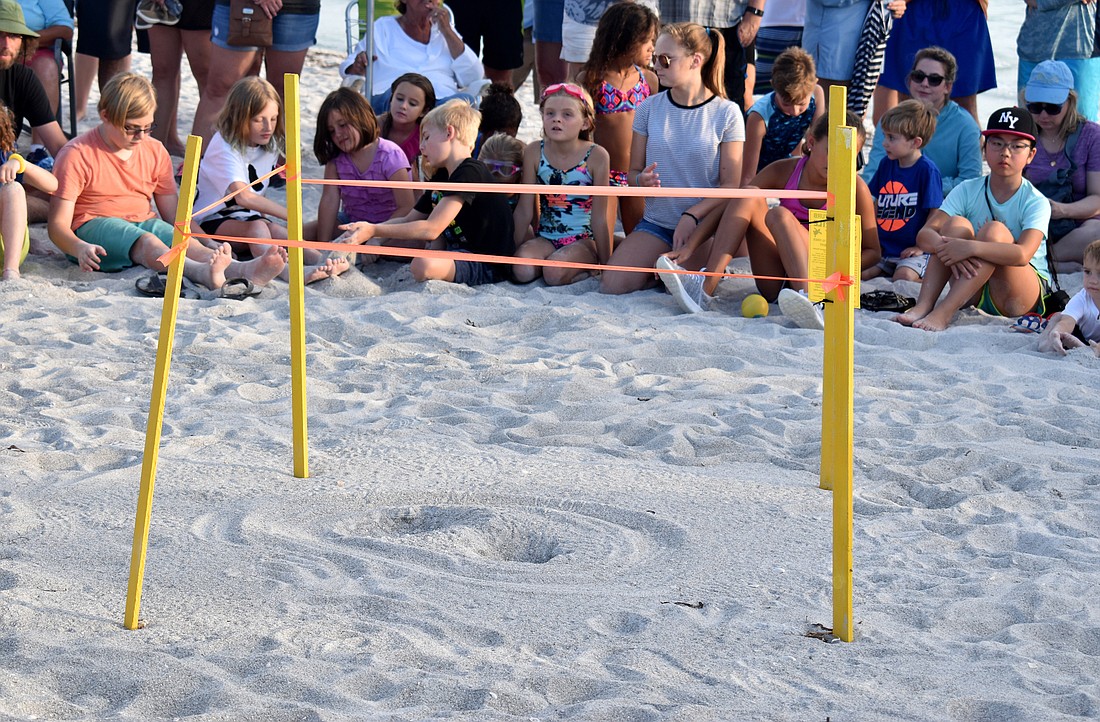- November 19, 2025
-
-
Loading

Loading

A late start to turtle nesting season is indicating a slow season but a strong one.
As of July 21, there were 914 loggerhead turtle nests on Longboat Key. There were 953 false crawls.
At this time last year, there were 1,192 nests and 1,104 false crawls. In 2016, the total was at 967 nests and 1,422 false crawls. Likewise, numbers are down on Siesta Key, Lido Key and Casey Key.
Although the turtles are tallying downward this year, there’s no imminent cause for concern.
Melissa Bernhard, scientist at Mote Marine Laboratory and Aquarium, said right now, there’s no reason to worry. Despite the last two years being record breaking years, the numbers right now are higher than the count from three years ago she said.
“It’s not the same turtles every year, so one year of a slight dip is not a warrant for concern,” Bernhard said. “If the numbers continue to trend downward, that’s when they become more of a concern.”
Turtles tend to nest every two to three years. So, it is possible that the turtles from 2016’s record-breaking year will be back next year instead of this year.
“Some are mixed in from three years ago and some are from five years ago, so it’s hard to directly compare two years,” Bernhard said.
Nesting turtles sometimes lay up to seven nests with an average of 100 eggs in each. However, only 1 in 1,000 hatchlings tend to make it to adulthood. Over Memorial Day Weekend, Tropical Storm Alberto washed out 25 nests on Mote-monitored beaches.
But there are other factors besides storms that make it dangerous for hatchlings and nests.
“Pretty much from the moment the egg is laid, they’re in danger of something,” Bernhard said. “Even as adults they have threats, so the eggs are in danger of predators, in danger of storms washing them out. Once hatched, predators, light leading them the wrong direction… if they make it to the water, they become targets for anything that eats small things. As they grow, boats become issues, and plastic and pollution.”
With all of that, the Town of Longboat Key is doing what it can to help turtles. Longboat Key Code Enforcement is working to really implement the revisions to Chapter 100 of the Town’s Code of Ordinance for turtle protection. Longboat Key Code Enforcement Officer Chris Elbon said in an email that Code Enforcement typically conducts inspections two nights per week along one to two miles of the beach.
Elbon also said that during 2016 and 2017, there was an emphasis on education and community outreach to inform Longboat Key residents, guests and property owners and managers of the revisions to the turtle protection ordinance in addition to conducting inspections. This season, Elbon wrote that the primary emphasis has been conducting code enforcement inspections for noncompliance while still maintaining the educational and community outreach component.
At the beginning of this nesting season, the Longboat Key Turtle Watch kicked off its “Flip a Switch, Make a Move”
campaign in partnership with Ringling College. In addition to newly designed door hangers and posters that were given to hotels and property managers throughout the island, Turtle Watch Vice President Cyndi Seamon and other volunteers have distributed coasters and kids’ placemats to Longboat restaurants as part of the campaign urging Longboat Key residents and guests to turn off lights at nighttime.
Should a turtle follow a light that is brighter than the moon, it’s called a disorientation. Bright lights lead turtles farther from the water.
“Anecdotally, it seems like disorientations are going to be a problem again this year,” Bernhard said.
The Longboat Key Turtle Watch walks the Manatee County beach of Longboat Key every morning to track turtle nests and note when they hatch. Seamon and other volunteers continue to find trash scattered along the sand. A few weeks ago, Seamon found five balloons around the beach.
Seamon said there wasn’t a real fast start to this season. Last year around the Fourth of July was a peak time for turtles to nest, but Seamon didn’t notice that this year.
Despite the down numbers, Seamon said it still looks like the season will be a good one, though she doesn’t think this year’s numbers will rival last year’s count.
“I would say if we haven’t reached the same number as last year at this point, we won’t beat it,” she said.